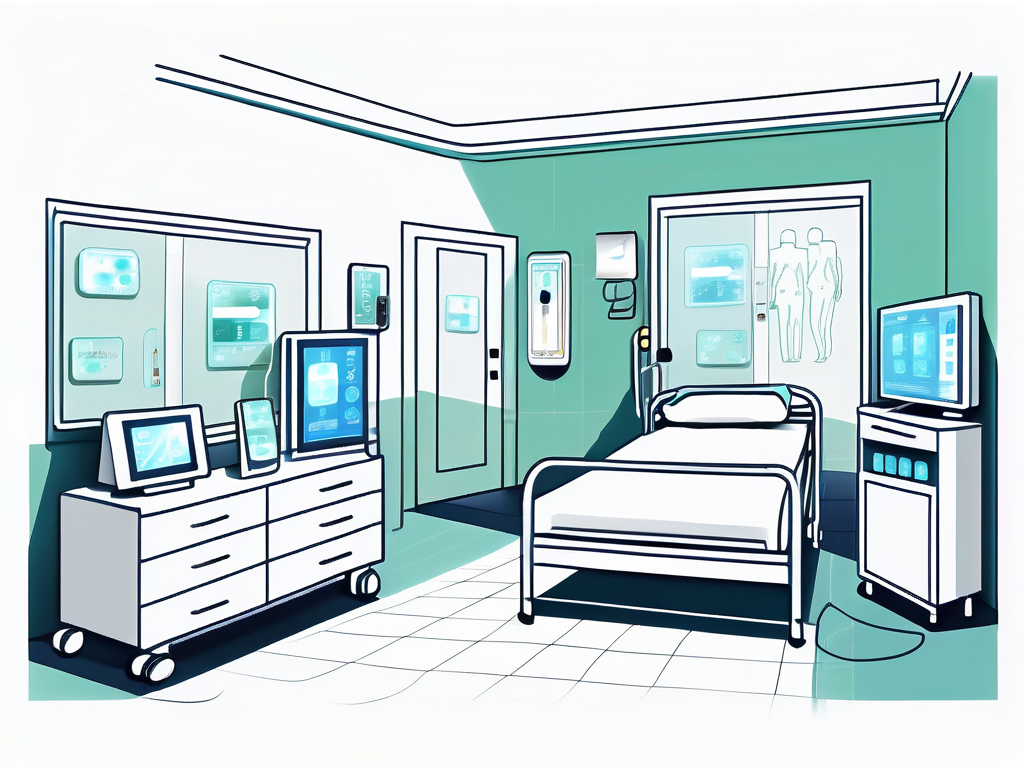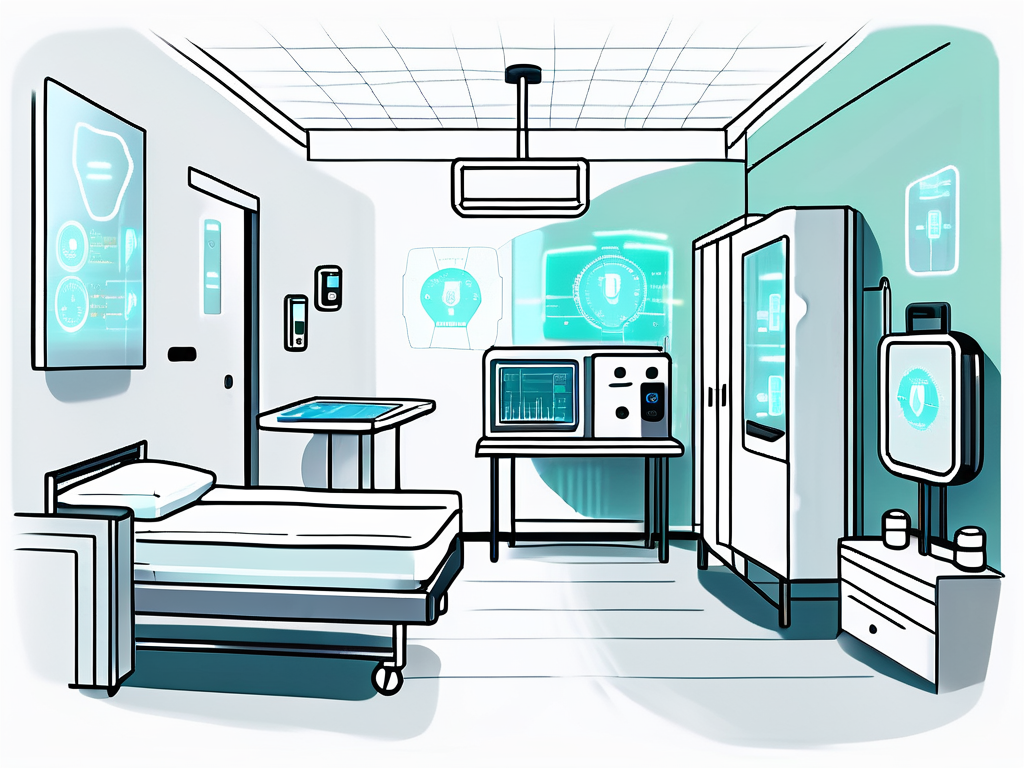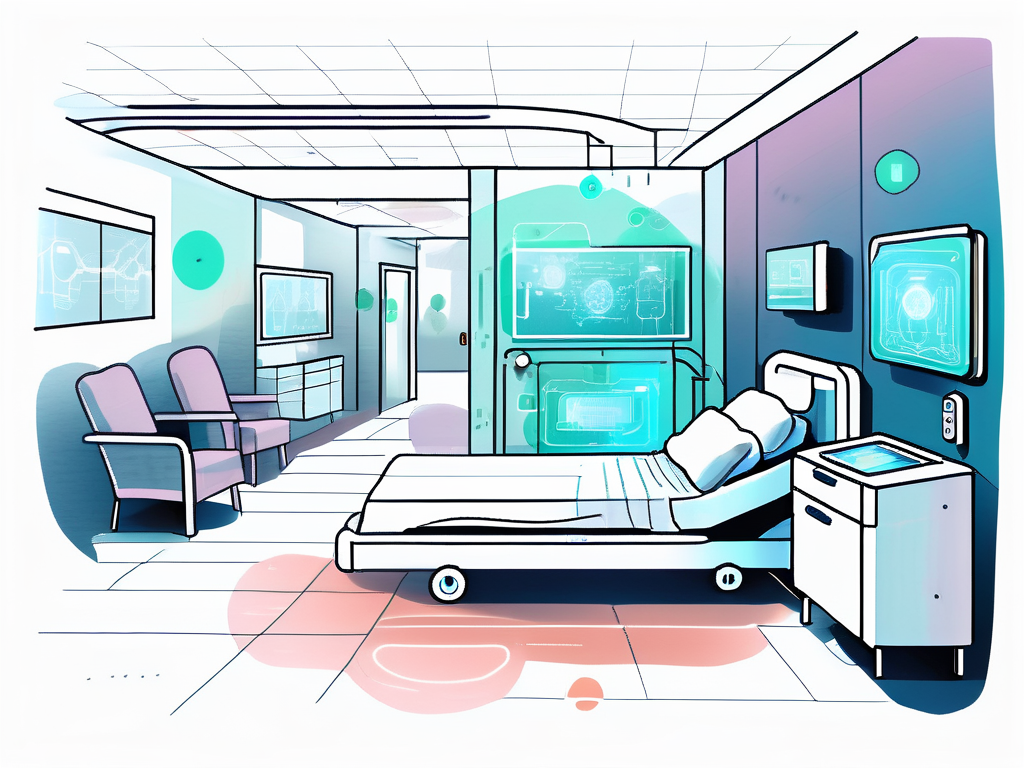Technology has revolutionized various industries, and the field of healthcare is no exception. In recent years, the use of technology in nursing homes has gained significant attention, promising to enhance the quality of care provided to elderly residents. This article explores the role of technology in nursing homes, the benefits it brings, the challenges faced during its implementation, and the future prospects it holds for the industry.
Understanding the Role of Technology in Nursing Homes
In order to appreciate the impact of technology on elderly care, it is crucial to understand the shift towards digital care in nursing homes. Traditionally, healthcare in these facilities has relied heavily on manual processes and human intervention. However, with the rapid advancements in technology, nursing homes are embracing digital solutions to elevate the standard of care provided.

As nursing homes continue to evolve, the integration of technology plays a pivotal role in enhancing the quality of life for residents. Beyond just streamlining processes, these technological advancements are fostering a more personalized and efficient approach to caregiving. By embracing innovation, nursing homes are not only improving medical care but also promoting social engagement and mental well-being among residents.
The Shift Towards Digital Care
Nursing homes are transforming from paper-based systems to more efficient digital methods. Electronic health records enable caregivers to access resident information easily, allowing for a more holistic approach to care. Moreover, wearable devices and remote monitoring technologies allow real-time tracking of vital signs and provide timely intervention in case of emergencies.
With the shift towards digital care, nursing homes are also focusing on enhancing communication channels between residents, caregivers, and families. Technology facilitates seamless interaction and updates, ensuring that all parties involved are well-informed about the well-being and progress of the residents. This transparency and connectivity contribute to a more collaborative and supportive care environment.
Key Technologies Used in Elderly Care
Nursing homes leverage various technologies to improve the well-being of their residents. Telemedicine enables physicians to remotely assess the health of residents, minimizing the need for physical visits. Assistive technologies such as voice-activated devices and smart home automation systems provide convenience and support to elderly individuals. Additionally, robotics and artificial intelligence are being explored to assist with tasks such as medication management and fall prevention.
Embracing these key technologies not only enhances the efficiency of care delivery but also empowers residents to maintain a sense of independence and autonomy. By incorporating a diverse range of technological solutions, nursing homes are creating a more inclusive and dynamic environment that caters to the evolving needs of the elderly population.
The Benefits of Implementing Technology in Nursing Homes
The implementation of technology in nursing homes brings forth a multitude of benefits for both residents and caregivers.
Integrating technology into nursing homes not only modernizes the caregiving process but also revolutionizes the way residents experience their daily lives. By incorporating state-of-the-art monitoring systems, nursing homes can ensure the safety and well-being of residents round the clock. These systems can detect emergencies such as falls or sudden health issues, allowing for immediate intervention and potentially saving lives.
Enhancing Quality of Life for Residents
Technology enables nursing homes to create a personalized and comfortable environment for residents. Interactive devices, such as tablets and virtual reality headsets, offer entertainment and cognitive stimulation. Furthermore, communication platforms provide opportunities for residents to connect with their loved ones, reducing feelings of isolation and enhancing social interactions.
Moreover, the implementation of smart home technology in nursing facilities allows residents to have more control over their environment. From adjusting lighting and temperature settings to requesting assistance with a simple voice command, residents can experience a greater sense of independence and autonomy.
Streamlining Caregiver Tasks and Responsibilities
By automating routine processes, technology alleviates the burden on caregivers, allowing them to focus on providing quality care. Digital solutions for medication management reduce the risk of errors and help ensure residents receive the correct doses at the right time. Additionally, electronic documentation systems replace time-consuming paperwork, enabling caregivers to spend more time engaging with residents.
Furthermore, the integration of artificial intelligence (AI) in nursing homes can provide valuable insights for caregivers. AI-powered analytics can track trends in residents’ health data, alerting caregivers to any deviations from normal patterns. This proactive approach enables early intervention and personalized care plans, ultimately improving health outcomes for residents.
Challenges in Integrating Technology into Elderly Care
Despite the numerous advantages, integrating technology into elderly care is not without its challenges.

One significant challenge in integrating technology into elderly care is the need to consider the diverse range of abilities and experiences among older adults. While some seniors may be tech-savvy and eager to adopt new technologies, others may struggle with even the most basic digital tools. This variation underscores the importance of personalized approaches to technology integration in nursing homes.
Addressing Technological Literacy Among the Elderly
Many elderly individuals may be unfamiliar or uncomfortable with technology. Nursing homes must invest in digital literacy training programs to empower residents to utilize technology for their benefit. Additionally, user-friendly interfaces and ongoing support are essential to assist residents in overcoming any technological barriers they may face.
Moreover, it is crucial to recognize that learning to use technology can be a source of empowerment and engagement for older adults. By introducing technology in a supportive and encouraging environment, seniors can enhance their cognitive abilities, stay connected with loved ones through digital communication, and access valuable resources such as telehealth services.
Balancing Technology and Human Touch in Care
While technology has the potential to enhance care, it is essential to strike a balance between its use and maintaining the human touch. Nursing homes must ensure that technology remains a tool to support caregivers rather than replace their presence and emotional connection. Building and maintaining relationships with residents is vital in providing holistic care.
In this delicate balance, technology can be integrated in ways that complement the human touch, such as using remote monitoring systems to ensure the safety of residents while allowing caregivers more time for direct interactions. By leveraging technology to streamline administrative tasks and enhance communication, caregivers can focus on meaningful interactions and personalized care for elderly residents.
Future Prospects of Technology in Nursing Homes
The future of technology in nursing homes holds immense potential for further advancements and innovations. As the aging population continues to grow, the need for efficient and effective elderly care becomes increasingly important. Fortunately, emerging technologies are paving the way for a new era of nursing home care, offering a range of possibilities to improve the lives of residents and caregivers alike.

Emerging Technologies and Their Potential
Technologies such as virtual reality, robotics, and artificial intelligence continue to evolve, presenting new possibilities for elderly care. Virtual reality, for instance, can be utilized for immersive therapy sessions, allowing residents to experience new environments and engage in therapeutic activities without leaving the comfort of their rooms. This technology has shown promising results in reducing pain and anxiety, as well as improving cognitive function and overall well-being.
Similarly, robotics have the potential to revolutionize the way nursing homes provide care. These intelligent machines can assist with mobility, helping residents move around safely and independently. Additionally, robots can provide companionship, offering social interaction and emotional support to those who may feel isolated or lonely. With their ability to perform tasks such as medication reminders and monitoring vital signs, robots can alleviate some of the burden on caregivers, allowing them to focus on providing personalized care.
The integration of artificial intelligence can also enhance predictive analytics in nursing homes. By analyzing data from various sources, such as electronic health records and wearable devices, AI algorithms can identify patterns and trends that may indicate potential health issues. This proactive approach to care enables nursing home staff to intervene early, preventing complications and improving outcomes for residents. Furthermore, AI-powered chatbots can provide 24/7 support, answering questions and addressing concerns, ensuring residents have access to information and assistance whenever they need it.
Preparing for a Tech-Driven Future in Elderly Care
Nursing homes must adapt to the evolving landscape of technology in order to stay ahead in terms of quality care. This involves staying informed about emerging trends and advancements, fostering partnerships with technology providers, and allocating resources for ongoing training and implementation. By actively seeking out innovative solutions and embracing a tech-driven future, nursing homes can ensure a higher standard of elderly care.
Training and education are crucial components of preparing for a tech-driven future. Caregivers and staff members need to be equipped with the necessary skills and knowledge to effectively utilize and manage these technologies. Ongoing training programs can help them stay up-to-date with the latest advancements and ensure they are proficient in using the tools at their disposal. Additionally, fostering a culture of innovation and open communication within nursing homes can encourage staff to embrace new technologies and contribute to their development.
In conclusion, the future of technology in nursing homes is filled with promise and potential. With the adoption of digital solutions, nursing homes can enhance the quality of life for residents while streamlining caregiver tasks. However, integrating technology comes with its own set of challenges, such as addressing technological literacy and maintaining the human touch in care. Looking ahead, nursing homes must continue to embrace emerging technologies and prepare for a tech-driven future in elderly care. By doing so, they can continue to provide the best possible care for their residents in this digital age, ensuring their well-being and happiness.

